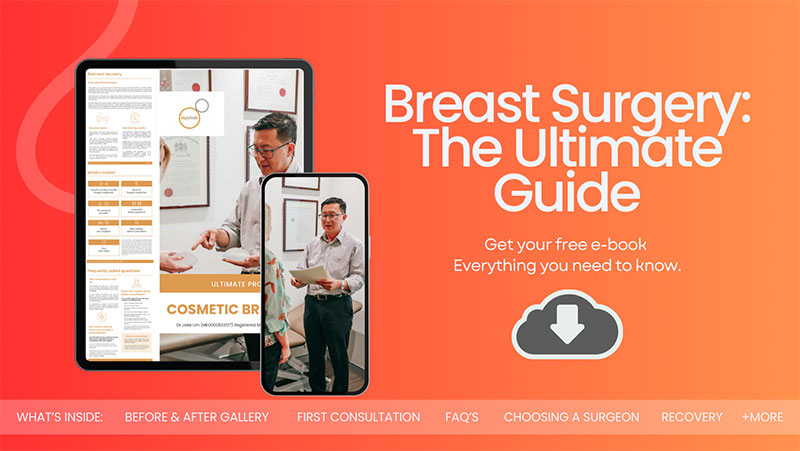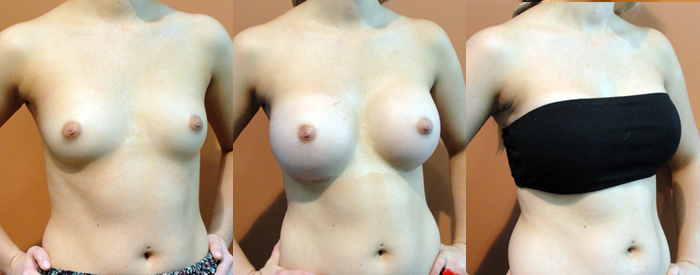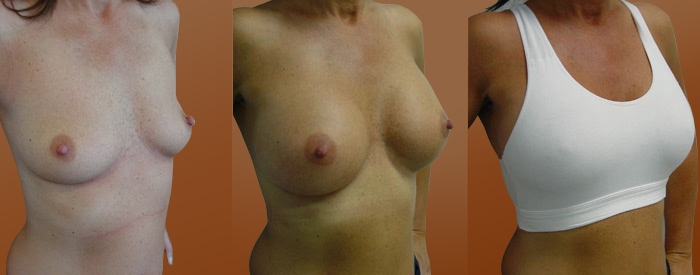Capsular Contracture – A Potential Complication after Breast Implants Surgery
Capsular contracture can affect both the appearance and feel of breast implants, leading to cosmetic dissatisfaction and discomfort. That’s why understanding this condition is important for maintaining both your health and satisfaction with the results following breast augmentation surgery.
Capsular contracture is not just a medical term but a real issue that could impact anyone with breast implants. This condition involves the hardening of the capsule that naturally forms around the implant, which can cause aesthetic changes and pain. Dr Jake Lim, a Sydney specialist plastic surgeon with experience in the field, has dealt with numerous cases of capsular contracture. Throughout his career, Dr Lim has focused on not only treating but also educating about the risks associated with breast implants and the strategies to mitigate them.
Download Dr Lim’s Free 2024 Ultimate Breast Surgery Guide

More about Capsular Contracture
Capsular contracture is one of the most common but challenging complications associated with breast implants. It occurs when the fibrous capsule that the body naturally forms around a breast implant tightens and compresses the implant, making the breast feel harder and potentially distorting its appearance. This condition can affect both the aesthetic outcomes and physical comfort of those who have undergone breast augmentation or reconstruction surgery.
What is Capsular Contracture?
Following breast implant surgery, the body’s natural response is to create a protective lining around the foreign object, in this case, the breast implant. This lining, or capsule, is made up of fibrous tissues. Normally, this capsule helps to keep the implant stable and correctly positioned. However, in some cases, the capsule can begin to tighten and squeeze the implant. This is known as capsular contracture.
Capsular contracture is classified into four grades based on its severity:
- Grade I: The breast appears normal and the capsule is flexible
- Grade II: The breast appears normal but feels slightly firm
- Grade III: The breast shows visible abnormalities and feels firm
- Grade IV: The breast is hard, painful, and appears distorted
Causes of Capsular Contracture
The exact cause of capsular contracture is not fully understood, but several factors are believed to contribute to its development:
· Bacterial Contamination
Microscopic bacterial contamination during surgery can trigger an excessive inflammatory response, leading to thickening and contraction of the capsule. This theory highlights the importance of sterile techniques and careful handling during implant surgery.
· Implant Rupture
If a breast implant ruptures, the release of silicone gel or saline solution can irritate the surrounding tissues and incite an inflammatory reaction that may lead to capsular contracture.
· Surgical Errors
Mistakes made during the implantation surgery, such as incorrect placement of the implant or excessive handling of the tissues, can increase the risk of developing capsular contracture. This underscores the importance of choosing an experienced and skilled plastic surgeon.
· Genetic Factors
Some research suggests that genetic predispositions might play a role in the likelihood of developing capsular contracture. Patients with a history of autoimmune diseases or allergic reactions are speculated to be at higher risk.
Symptoms to Watch For
The symptoms of capsular contracture vary depending on the severity of the condition. In the early stages, there might be a slight firmness and change in the texture of the breast. As the condition progresses, the following symptoms may be observed:
- Firmness and Tightening: The most common symptom is an increasing firmness of the affected breast, which can progress to painful hardness.
- Misshapen Appearance: The breast may start to look round, ball-like, or distorted.
- Pain and Discomfort: As the capsule contracts, it can put pressure on the implant and the surrounding nerves, causing pain and discomfort.
- Changes in Position and Height: The contracting capsule can pull the implant upwards or distort its position.
It is essential for patients with breast implants to monitor for any changes in the feel or appearance of their breasts and consult their surgeon if they notice any of these symptoms. Early intervention can prevent further complications and improve the outcome.

Preventative Measures
While it is not possible to guarantee the prevention of capsular contracture, there are several strategies that may reduce the risk:
· Selecting the Right Surgeon and Facility
The choice of surgeon is perhaps the most critical factor in preventing capsular contracture. It is essential to select a plastic surgeon with a proven track record in performing breast implant surgeries. Such surgeons are likely to employ advanced surgical techniques, which can significantly mitigate the risk of complications including capsular contracture.
Additionally, the surgical facility should adhere to the highest standards of sterility and care. Facilities that maintain rigorous sterilisation protocols help minimise the risk of bacterial contamination, which is a known contributing factor to capsular contracture.
· Importance of Comprehensive Pre and Post-Operative Care
Following your surgeon’s instructions both before and after surgery is paramount. This includes taking any prescribed antibiotics to prevent infection and attending all scheduled follow-up appointments to ensure proper healing and to monitor for any early signs of complications.
· Optimal Implant Selection and Placement
The type of implant and its placement can influence the likelihood of developing capsular contracture. Studies suggest that textured implants may have a lower incidence of capsular contracture compared to smooth-surfaced implants. Placing the implant under the muscle (submuscular placement) rather than on top of the muscle (subglandular placement) has also been associated with reduced risks of this complication.
· Lifestyle and Health Maintenance
Maintaining a healthy lifestyle and adhering to recommended post-operative activities may also play a role in preventing capsular contracture. Activities that enhance overall health, such as regular exercise (as approved by your surgeon), proper diet, and avoiding smoking, can improve your body’s healing capabilities and immune response, further reducing the risk of capsular contracture.
Treatment Options for Capsular Contracture
For patients experiencing capsular contracture, there are multiple treatment options that can be pursued. These options range from non-invasive methods to more extensive surgical interventions. The choice of treatment often depends on the severity of the condition, as well as your personal circumstances and preferences:
Early Stage Interventions
In cases where capsular contracture is identified early, several non-surgical treatments can be considered to help alleviate symptoms or potentially slow the progression of the condition.
Medications and Therapies
- Anti-Inflammatory Medications: Oral medications such as ibuprofen or other non-steroidal anti-inflammatory drugs (NSAIDs) can be prescribed to reduce pain and swelling.
- Vitamin E: Some studies suggest that Vitamin E supplements might help soften the scar tissue, although the evidence is not conclusive.
- Leukotriene Inhibitors: Drugs that are typically used to treat asthma, have shown promise in treating capsular contracture by reducing inflammation around the breast implant.
Physical Therapy
Massage and physical therapy techniques may be recommended to help maintain the elasticity of the breast capsule. However, it’s important to follow a therapist’s guidance to avoid exacerbating the condition.

Surgical Solutions for Capsular Contracture
If non-surgical methods are ineffective, or if the capsular contracture is particularly severe, surgical intervention may be necessary:
Capsulectomy
One common surgical treatment is capsulectomy, where the scar tissue capsule around the implant is completely removed. This procedure can be performed using different techniques depending on the situation:
- Total Capsulectomy: Removal of the entire capsule, which is often recommended for ensuring the most complex treatment of severe capsular contracture.
- Partial Capsulectomy: Only a part of the capsule is removed. This option may be considered in less severe cases.
Capsulotomy
Another surgical option is capsulotomy, which involves incising the capsule to release tension and pressure. This can be done:
- Open Capsulotomy: The capsule is surgically opened and the scar tissue is scored or cut under direct vision.
- Closed Capsulotomy: Historically, this technique involved manually breaking the scar tissue by external force; however, it is no longer recommended due to the high risk of implant rupture and other complications.
Implant Replacement or Removal
For some patients, the best approach may involve changing the implant or removing it entirely:
- Implant Exchange: Replacing the existing implant with a new one, possibly of a different type or texture, might be recommended. This can sometimes be done in conjunction with capsulectomy.
- Implant Removal: In cases where patients decide against continuing with implants, removal of the implant along with the capsule might be the best option.
What Dr Jake Lim Recommends for Treating Capsular Contracture
Dr Jake Lim offers comprehensive treatment plans tailored to address capsular contracture, a potential complication of breast implant surgery. He has developed a nuanced approach that emphasises both surgical and non-surgical strategies depending on your needs. Here’s an overview of his recommendations:
Personalised Treatment Plans
Dr Lim believes in the importance of a personalised approach. Each case of capsular contracture is unique, and treatment must be customised to suit the specific conditions and health profile of the patient. This personalised strategy begins with a thorough consultation and detailed imaging studies to assess the severity of the contracture and the condition of the implant and surrounding tissues.
Surgical Interventions
For some patients, Dr Lim recommends surgical options as the most effective method to relieve capsular contracture.
Emphasising Prevention
Prevention is a critical component of Dr Lim’s protocol for managing capsular contracture. He educates his patients on the importance of following all post-operative care instructions meticulously, including:
- Regular follow-up visits to monitor the condition of the implant and the surrounding tissues.
- Adhering to prescribed physical therapy routines to maintain tissue health.
- Immediate reporting of any unusual symptoms or changes in breast appearance or texture.
Support through Recovery
Understanding the psychological impact of recurring capsular contracture, Dr Lim supports his patients through every step of their recovery.
FAQs about Causes and Solutions for Capsular Contracture

What is the likelihood of developing capsular contracture after breast implant surgery?
- The likelihood of developing capsular contracture varies, but it is generally considered to be between 5% and 15% according to various studies. Factors that may influence this risk include the type of implant used, the surgical technique, and the individual’s healing response.
Can capsular contracture occur with both silicone and saline implants?
- Yes, capsular contracture can occur with both silicone and saline implants. However, the type of implant may influence the severity and timing of the contracture. Some studies suggest that the texture of the implant surface (smooth vs. textured) might play a more significant role in the development of capsular contracture than the type of filler used.
How long after implant surgery can capsular contracture develop?
- Capsular contracture can develop at any time after implant surgery. Some patients may notice signs within a few months, while others may not experience it for several years. It is essential to monitor for symptoms regularly and report any changes to your surgeon immediately to manage the condition effectively.
Are there any lifestyle changes I can make to reduce the risk of developing capsular contracture?
- Yes, there are several lifestyle changes that can help reduce the risk of developing capsular contracture. These include quitting smoking, as tobacco use can impair wound healing and increase the risk of complications. Maintaining a healthy diet and regular exercise regimen can also support your immune system and overall tissue health, potentially reducing the risk of adverse reactions to implants.
What should I do if I think I’m developing capsular contracture?
- If you suspect that you are developing capsular contracture, it is important to contact your plastic surgeon as soon as possible. Early intervention is key to managing the condition effectively. Your surgeon will likely recommend an examination to assess the severity of the contracture and discuss treatment options, which may range from medication to surgery depending on the specific circumstances and severity of your condition.
Further Reading about Breast Implants Surgery with Sydney Specialist Plastic Surgeon Dr Jake Lim
- Read Dr Jake Lim’s Blog about Submuscular vs Subglandular Breast Implant Placement (Augmentation)
- Read Dr Jake Lim’s Blog about Breast Implant Options
- Read Dr Jake Lim’s Blog about What I Wish I’d Known before I Had Breast Augmentation Surgery
- Read Dr Jake Lim’s Blog about Breast Augmentation with Small Implants
- Read Dr Jake Lim’s Blog about Benefits of Mentor Breast Implants
Medical References about Causes and Solutions for Capsular Contracture
- What is capsular contracture and how can it be treated? – ASPS
- Capsular Contracture after Breast Augmentation
- Risk Factors for Capsular Contracture
- Here’s what you need to know about capsular contracture – ASPS
- Capsular Contracture – an overview – ScienceDirect.com
About Dr Jake Lim
Highly qualified and experienced specialist plastic surgeon Dr Jake Lim focuses on facial plastic, cosmetic breast and body contouring after significant weight loss
Dr Lim creates the best possible plastic surgery results for his Australia-wide and international patients.
Dr Lim is passionate about making sure each and every patient has access to the right information about available treatments and procedures and is able to make well-informed decisions.
At My Klinik, patient safety, education and achieving optimal results are our top priorities.




